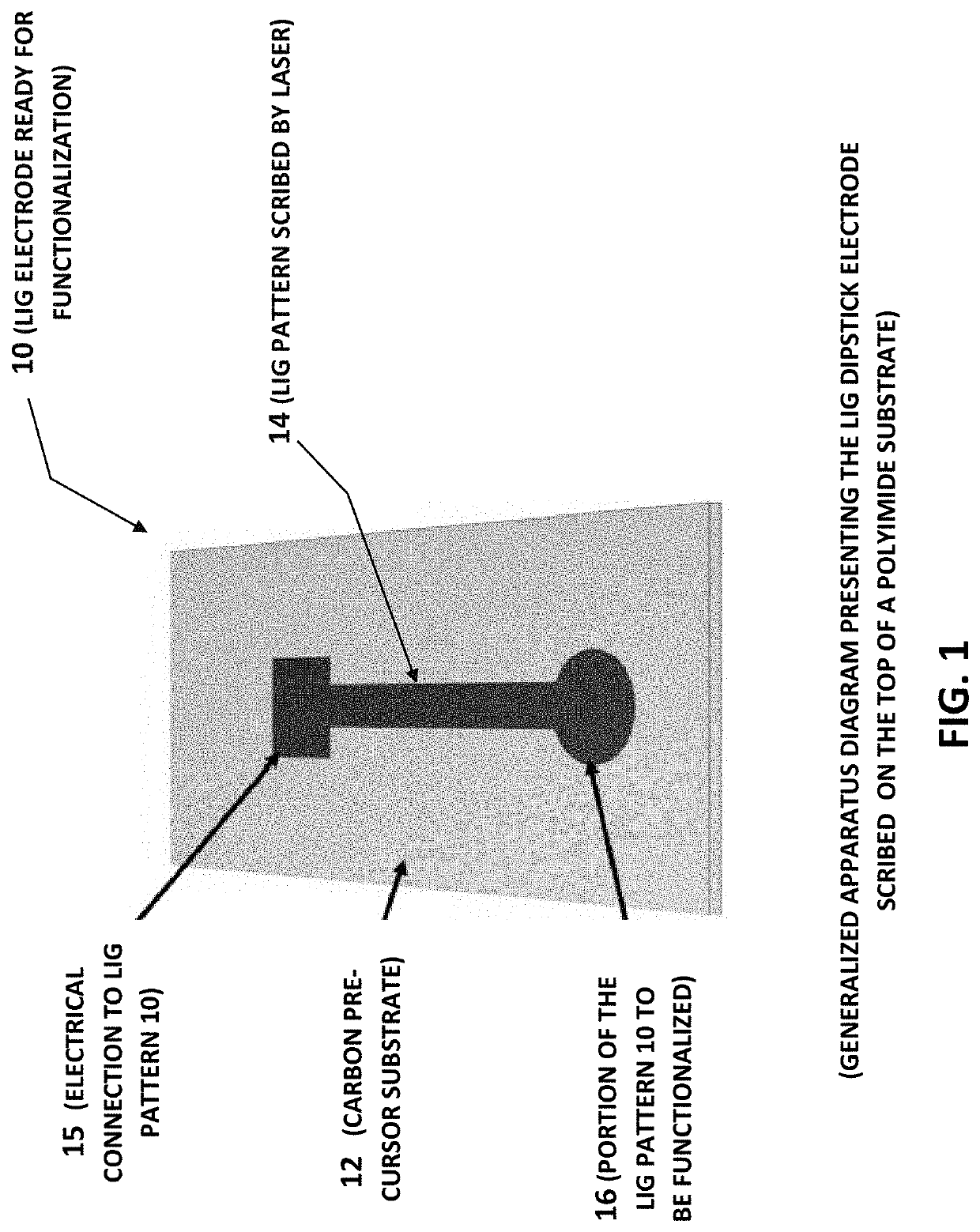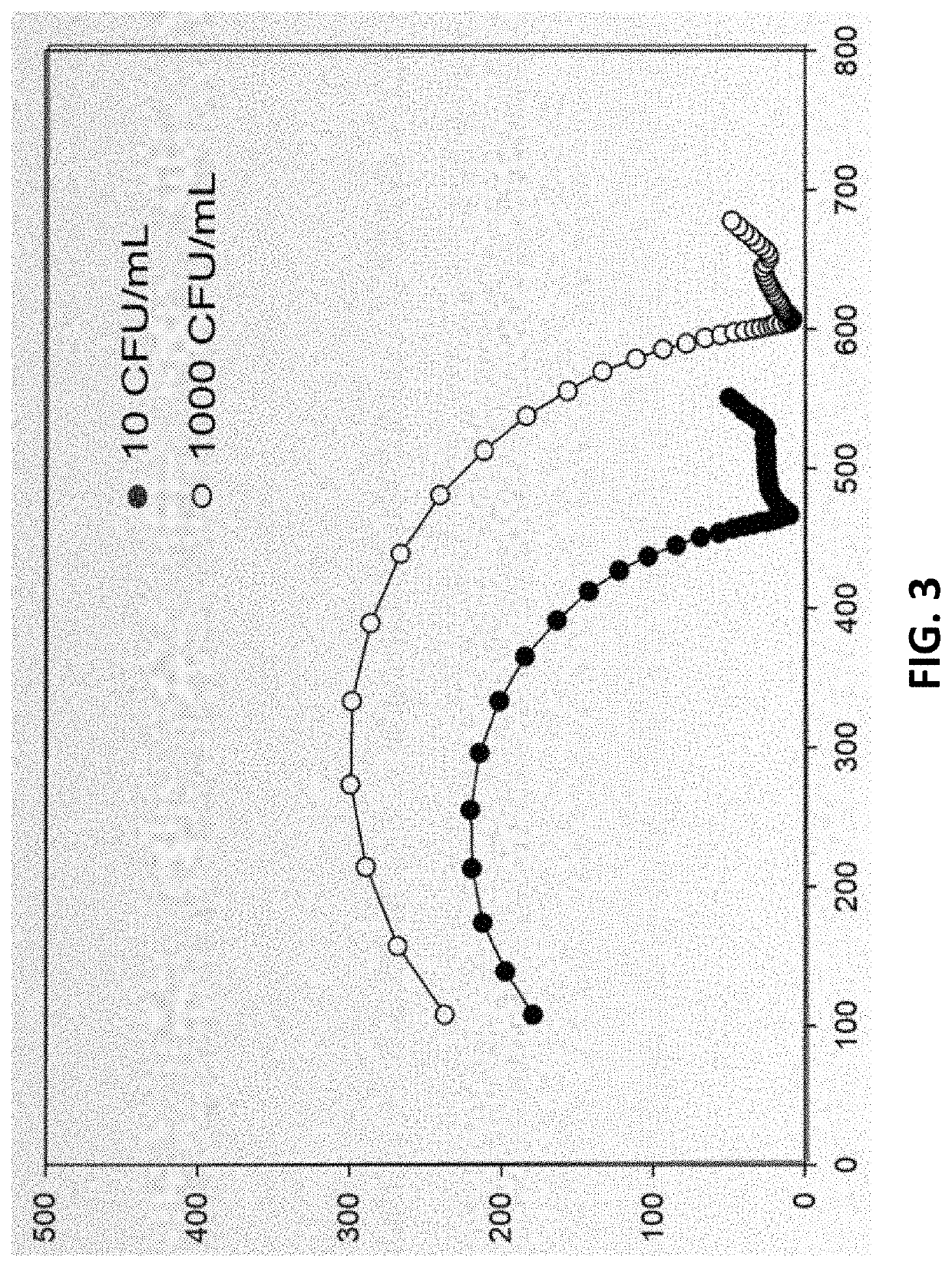Laser-induced graphene electrodes adaptable for electrochemical sensing and catalysis
a graphene electrode and electrochemical sensing technology, applied in the field of graphene-based electronics, can solve the problems of difficult operation and significant increase in and achieve the effects of improving the sensitivity of the electrochemical signal, increasing the response time, and increasing the complexity of the assay
- Summary
- Abstract
- Description
- Claims
- Application Information
AI Technical Summary
Benefits of technology
Problems solved by technology
Method used
Image
Examples
embodiments and examples
C. Specific Embodiments and Examples
[0115]Specific applications of aspects of the invention, and proof of concept data about them, are now set forth. As will be appreciated, these embodiments and examples meet at least some of the objects, features, advantages, and aspects of the invention.
embodiment and example 1
1. Specific Embodiment and Example 1
[0116]With particular reference to FIGS. 11A-C to 15A-B, specific embodiments of apparatus, methods, and systems according to the invention are set forth in more detail. This subject, including supporting information cited therein, is publicly available at: Raquel R. A. Soares; Robert G. Hjort; Cicero C. Pola; Kshama Pantie; Efraim L. Reis; Nilda F. F. Soares; Eric S. McLamore, Jonathan C. Claussen, Carmen L. Gomes, Laser-induced graphene electrochemical immunosensors for rapid and label-free monitoring of Salmonella enterica in chicken broth, ACS Sens. 2020, 5, 7, 1900-1911 published Apr. 29, 2020 https: / / doe.org / 10.1021 / acssensors.9b02345 copyright 2020 American Chemical Society. Supporting Information is available free of charge at https: / / pubs.acs.org / doi / 10.102 / acssensors.9b02345. Both of these are incorporated by reference herein in their entireties.
Laser-Induced Graphene Electrochemical Immunosensors for Rapid and Label-Free Monitoring of S...
embodiments and examples 2-4
2. Specific Embodiments and Examples 2-4
[0235]With particular reference to FIGS. 16 to 20A-D and FIGS. 25A-F to 28A-D, additional specific embodiments of apparatus, methods, and systems according to the invention are set forth in more detail. In particular, these examples utilize LIG electrodes like those in Specific Example 1, supra, but configured for different applications, as discussed below.
Laser-Induced Graphene Electrodes for Electrochemical Ion Sensing, Pesticide Monitoring, and Water Splitting
Abstract
[0236]Laser induced graphene (LIG) has shown to be a scalable manufacturing route to create graphene electrodes that overcomes the expense associated with conventional graphene electrode fabrication. Herein we expand upon Specific Example 1, supra, by functionalizing the LIG with metallic nanoparticles for ion sensing (Specific Example 2), pesticide monitoring (Specific Example 3), and water splitting (Specific Example 4). The LIG electrodes were converted into ion-selective se...
PUM
 Login to View More
Login to View More Abstract
Description
Claims
Application Information
 Login to View More
Login to View More - R&D
- Intellectual Property
- Life Sciences
- Materials
- Tech Scout
- Unparalleled Data Quality
- Higher Quality Content
- 60% Fewer Hallucinations
Browse by: Latest US Patents, China's latest patents, Technical Efficacy Thesaurus, Application Domain, Technology Topic, Popular Technical Reports.
© 2025 PatSnap. All rights reserved.Legal|Privacy policy|Modern Slavery Act Transparency Statement|Sitemap|About US| Contact US: help@patsnap.com



